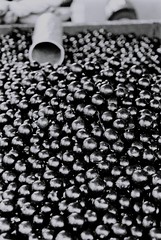Paul Nurse suggests that analyzing the information flow in living organisms would help to understand certain behaviors, which are not completely clear nowadays.
From a computer systems researcher standpoint, the interesting aspect of Paul Nurse's idea is that it goes on the opposite direction of previous studies: instead of drawing inspiration from nature to build information management systems (e.g. ant inspired algorithms), the author proposes to use information science tools to study the nature.
A piece from the article:
Systems analyses of living organisms have used a variety of biochemical and genetic interaction traps with the emphasis on identifying the components and describing how these interact with each other. These approaches are essential but need to be supplemented by more investigation into how living systems gather, process, store and use information, as was emphasized at the birth of molecular biology.
This sounds exciting, as a better understanding of living systems could feedback into the bio-inspired approach of designing distributed computational systems.
A couple of years ago, I briefly explored the design of a distributed storage system based on the behavior of the Messor Barbarus ants (for more details on the M. Barbarus ants see Anderson, C., J.J. Boomsma, and J.J. Bartholdi, III. 2002. Task partitioning in insect societies: bucket brigades. Insectes sociaux 49(2): 171-180).
The rationale behind it is quite simple: every time an unloaded larger ant encounters a loaded smaller ant, the load is passed from the smaller to the larger ant. This naturally spread the work among the workers according to their capacity (strength and speed).
Bringing it back to the context of distributed storage systems, the idea is to enable a self-organizing load balance scheme by making larger nodes to request more load from lower capacity nodes. The goal is to improve throughput and data availability.
Obviously, a comprehensive performance evaluation is necessary to claim that this strategy would lead to an globally efficient system.

